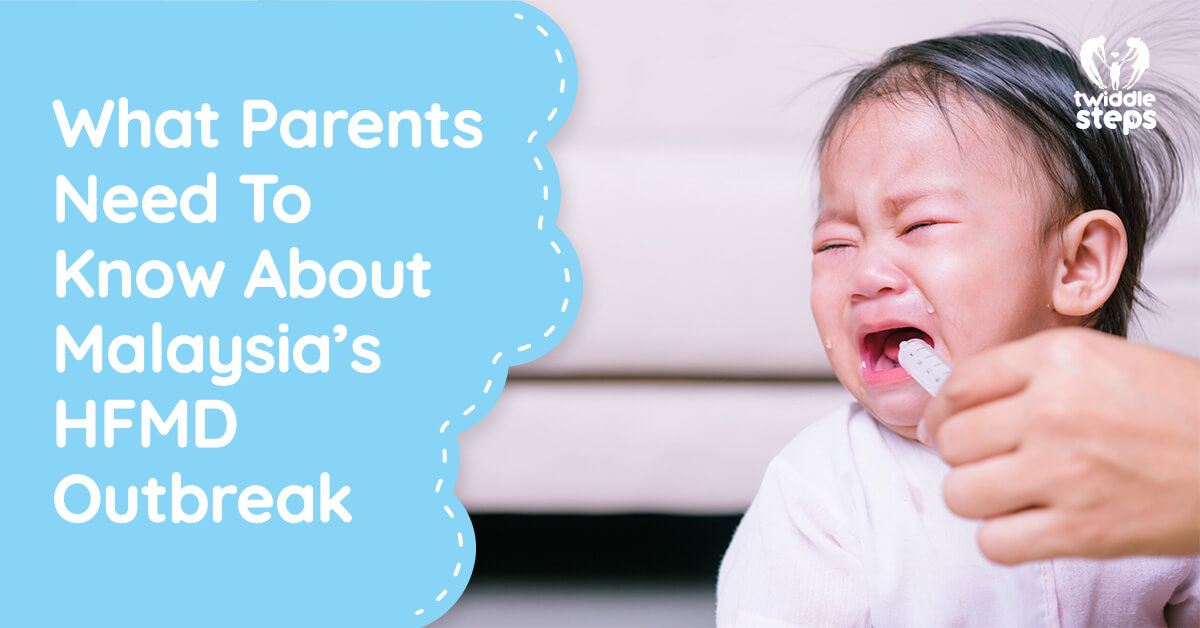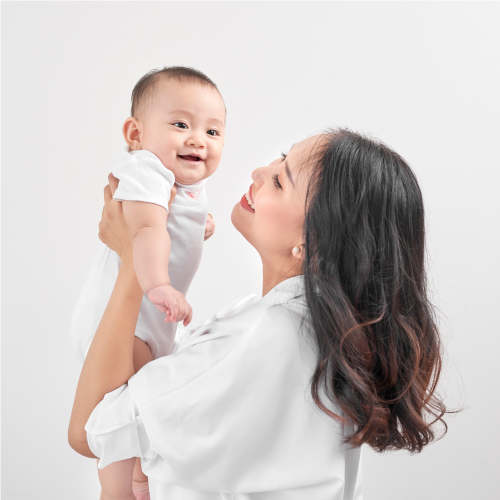
As a parent of a baby or toddler in Malaysia right now, you’ve likely heard concerning news about the Hand, Foot and Mouth Disease (HFMD) outbreak sweeping through the country.
According to the Malaysian Health Ministry, nearly 100,000 HFMD cases have been reported in the first few months of 2025 alone—that’s more than triple the cases from the same period last year. If you live in Selangor, Johor, Perak, Kelantan, or Kuala Lumpur, your child’s risk is even higher, as these areas have reported the most cases.
Most concerning for parents of babies and toddlers is that about 90% of all cases are affecting children under 6 years old. This means your little one is in the highest risk group, especially if they attend daycare, nursery, or preschool, which are the primary outbreak locations.
How Would I Know If My Baby Has HFMD?
Recognizing HFMD early can help prevent it from spreading to other family members and children. Here’s what to watch for in your baby or toddler:
3-5 Days After Exposure:
- Sudden fever, often the first warning sign
- Your usually energetic toddler seems tired, fussy, or refuses to play
- Loss of appetite or refusing favorite foods and bottles
- Excessive drooling (which may indicate painful mouth sores)
- Your child seems to be in pain when drinking or eating
1-2 Days After Fever:
- Small red spots inside your child’s mouth, which may turn into painful blisters
- Your baby or toddler might cry when trying to feed or drink
- A distinctive rash with flat or raised red spots, typically appearing on the delicate skin of:
- Palms and fingers
- The soles and heels of feet
- Sometimes the diaper area or buttocks
- These spots often develop into fluid-filled blisters that look different from typical diaper rash
The challenge for parents of babies and pre-verbal toddlers is that your little one can’t tell you what hurts. You might notice they’re pulling at their mouth, refusing to put weight on their feet, or crying when you touch certain areas.
How to Protect Your Baby or Toddler
Prevention is your best strategy during this outbreak:
Daily Protection Routines:
- Wash your baby’s hands frequently throughout the day, especially after diaper changes and before meals
- Clean pacifiers, teething toys, and bottles thoroughly after each use
- Disinfect high-contact surfaces like changing tables, high chairs, and crib rails daily
- Avoid taking your baby or toddler to crowded indoor play areas during the outbreak period
- Consider temporarily limiting playdates with children showing any signs of illness
Childcare Precautions:
- Ask your daycare provider about their HFMD prevention protocols
- Check whether staff are screening children for symptoms before entry
- Inquire about their disinfection schedule for toys and surfaces
- Pack your child’s own drinking cup, plate, and utensils if possible
- Consider keeping your child home temporarily if multiple cases are reported at their daycare
Caring for a Baby or Toddler With HFMD
If your little one does contract HFMD, here’s how to manage it at home:
Comfort Measures:
- Offer cold, soft foods that won’t irritate mouth sores (yogurt, ice cream, smoothies)
- Try offering chilled teething rings to soothe mouth pain
- Use infant-appropriate pain relievers as recommended by your pediatrician
- Dress your child in loose clothing to avoid irritating skin lesions
- Change diapers more frequently and allow air-drying time for babies with blisters on their bottom to prevent further irritation
Hydration Strategies:
- Offer smaller, more frequent feedings or sips of fluid throughout the day
- Try freezing breast milk or formula into popsicles for older babies
- Use a medicine dropper or syringe to gently place liquids in the side of the mouth away from sores
- Keep track of how much your child is drinking and monitor wet diapers
Conclusion
The current HFMD outbreak in Malaysia is understandably frightening for parents of young children, but with vigilance and proper precautions, you can minimize your baby’s risk.
————
You might also be interested in: Influenza In Babies and Kids


